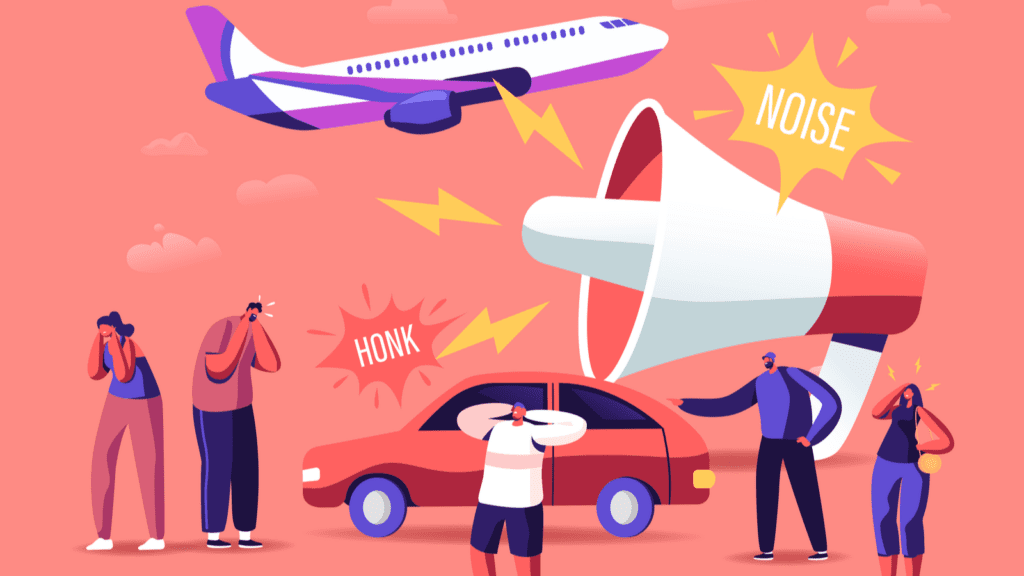

Dealing with Noise Pollution at Popular Urban Destinations is critical for maintaining the quality of life in bustling urban areas. Imagine a vibrant city where the din of traffic and construction doesn’t overwhelm your senses, where the symphony of nature isn’t drowned out by incessant noise. This article explores how to tackle this pressing issue. We’ll delve into the causes of noise pollution in popular urban areas, examine the impact on public health and well-being, and discuss effective strategies to mitigate noise levels and create a more peaceful urban experience. This comprehensive guide will explore how to reduce noise effectively and ensure a harmonious balance within urban environments. We’ll cover everything from urban planning solutions to individual actions.
Understanding Noise Pollution in Urban Areas
Defining Noise Pollution
Noise pollution is an increasing concern in urban areas, affecting the health and well-being of residents and visitors alike. It encompasses any unwanted or excessive sound that negatively impacts a person’s comfort or ability to perform activities, like sleeping or concentrating. Noise levels often surpass acceptable limits due to sources like traffic, construction, industrial activities, and loud gatherings, significantly disrupting the peace and quiet of urban environments.
The Health Impacts of Noise Pollution
Noise pollution can induce several negative impacts on physical and mental health, ranging from stress and anxiety to cardiovascular issues and hearing loss. Prolonged exposure to high noise levels can lead to hypertension, cardiovascular problems, sleep disturbances, reduced cognitive function, and even mental health disorders. It’s essential to recognize these health risks in order to promote urban noise reduction effectively.
Strategies for Noise Reduction
Implementing Urban Planning Solutions
Urban planners play a pivotal role in creating sound-friendly urban environments by incorporating noise mitigation strategies into their designs. This involves implementing strategic noise barriers to absorb and deflect sound waves in vulnerable areas. Careful consideration of building layouts, materials, and urban configurations is crucial in minimizing noise transmission between buildings and reducing urban noise levels. The placement of green spaces, parks, and open areas can also play a crucial role in absorbing sound and creating tranquil zones within the urban fabric. Examples of successful urban noise reduction projects show how creating quieter public spaces can enhance the quality of urban life.
Mitigating Noise from Transportation
Traffic-related noise pollution is a significant concern, often stemming from excessive vehicles, especially those lacking noise-reduction technologies. Strategies include investing in quieter public transportation options like electric buses and promoting cycling and walking to reduce noise generated by automobiles. Noise-reduction strategies for automobiles and public transportation can dramatically reduce the urban noise footprint. Dedicated noise reduction zones, as well as enforcing and strictly monitoring vehicle noise levels, are important steps in curbing traffic noise.
The Role of Public Awareness
Educating Communities on Noise Pollution
Educating the public on the health implications of noise pollution is paramount. Public awareness campaigns and educational initiatives can effectively communicate the damaging effects noise pollution can have on both individuals and the community as a whole. This could include workshops, educational materials, and social media campaigns to raise awareness among residents. By empowering communities with this knowledge, they can actively participate in noise reduction efforts.
Fostering a Culture of Sound Responsibility
Creating a culture of sound responsibility involves promoting noise-conscious behavior amongst citizens. This can include encouraging individuals to adopt quieter habits in everyday activities like using quieter lawn equipment or managing indoor sound levels. Encourage individuals to report excessive noise levels in their neighborhoods. Promoting sound etiquette and responsible behavior in public spaces through education can be highly effective in decreasing noise pollution.
Case Studies and Examples
Successful Noise Reduction Initiatives
Several cities around the world have successfully implemented noise reduction initiatives. These include creating noise buffers around residential areas, implementing stricter noise regulations for construction, and promoting the use of quieter vehicles. Case studies of these successful implementations can provide valuable insights and inspiration for similar initiatives in other urban areas.
The Impact of Noise Mitigation on Quality of Life
Research often demonstrates the positive impact of noise mitigation efforts on the quality of life for urban residents. Studies have shown that reductions in noise levels can lead to improvements in sleep quality, mental well-being, and general health. These improvements highlight the importance of incorporating noise reduction strategies into urban planning practices.
Technological Solutions for Noise Pollution Reduction
Utilizing Sound-Absorbing Materials
Utilizing sound-absorbing materials is an important method to reduce noise pollution. Materials like acoustic panels or porous surfaces can be incorporated into buildings and urban structures to dampen noise transmission and absorption.
Innovative Noise-Reducing Technologies
Innovations in noise-reducing technologies are continually emerging, including specialized noise-canceling equipment for vehicles and construction. By implementing such advanced technologies, we can effectively combat noise pollution and create safer, healthier, and more peaceful urban environments.
Enforcing Noise Regulations
Establishing Clear and Enforceable Noise Standards
Establishing clear, comprehensive, and enforceable noise standards is crucial. Regulations should specify acceptable noise levels in different urban areas, outlining permissible levels of noise pollution in various zones, such as residential areas, commercial zones, and industrial areas. Effective enforcement of these regulations through sound monitoring systems, penalties, and fines, discourages excessive noise generation.
Monitoring Noise Levels and Sound Monitoring
Ongoing monitoring of noise levels throughout urban areas can help track the effectiveness of noise reduction strategies and identify areas that need more attention.
Evaluating Success
Measuring the Effectiveness of Noise Reduction Initiatives
Measuring the effectiveness of implemented noise-reduction strategies is essential. Evaluating noise reduction efforts against predefined benchmarks can help track progress, highlight areas needing adjustments, and demonstrate the value of such measures. Assessing the impact of these interventions on the community’s health and quality of life is essential.
Long-Term Evaluation and Monitoring
Implementing long-term monitoring programs for evaluating the effectiveness of the noise-reduction strategies can lead to more precise assessments of the impact of these initiatives and how they affect the well-being of the communities.
Collaboration and Community Engagement
Fostering Partnerships Among Stakeholders
Effective noise reduction requires collaboration among various stakeholders, including government agencies, urban planners, community organizations, and residents. By forming partnerships and fostering effective communication, we can create a collaborative environment that focuses on achieving our shared goals and addressing noise pollution together. Citizen participation is key to success.
Community Engagement in Noise Reduction Strategies
Involving local communities in designing and implementing noise reduction strategies is essential. By incorporating their insights and experiences, we can create tailor-made solutions that address specific noise concerns within their neighborhoods and ensure the solutions meet the local community’s needs.
Future Directions in Noise Mitigation
Integrating Noise Reduction in Urban Design
Urban design should proactively incorporate noise reduction into the planning process. Design considerations should prioritize noise-conscious principles to support a quieter, more tranquil urban environment. This will help create safer and more pleasant urban environments.
Ongoing Research in Noise Pollution
Research into noise pollution and its impact on health and well-being is necessary. By continuing this research, urban planners and policymakers can develop even more effective strategies to address noise concerns and create more quiet and healthy urban communities. This should also include advancements in noise-reduction technologies and solutions.
Frequently Asked Questions
What are some examples of noise pollution control measures?
Various noise pollution control measures exist, including noise barriers, sound-absorbing materials, and the use of quieter equipment. Implementing traffic management systems can help reduce noise pollution from vehicles. Enforcing noise regulations for construction and industrial activities is another important measure. Public awareness campaigns can help citizens understand the detrimental effects of noise pollution and how to contribute to a quieter urban environment.
How can urban planners contribute to reducing noise pollution in urban areas?
Urban planners can design quieter urban environments by including green spaces and noise barriers in their plans. Consideration of building materials and layouts can minimize noise transmission. Creating noise-buffer zones around sensitive areas such as hospitals or residential neighborhoods is another important aspect of planning. Public transportation systems, pedestrian zones, and access to green spaces can also play a crucial role in decreasing noise exposure and improving overall urban health.
How can public awareness programs contribute to noise reduction?
Effective noise reduction campaigns can educate residents about the damaging effects of noise pollution. They must emphasize responsible behavior in generating less noise. Educational programs can provide information on how noise affects people’s health and well-being, along with simple tips for reducing noise in daily life. By actively involving residents in awareness programs, urban areas can foster a greater sense of collective responsibility in minimizing noise pollution.
In conclusion, effectively managing noise pollution in bustling urban destinations requires a multi-pronged approach. By combining responsible urban planning, implementing noise mitigation strategies, and fostering public awareness, we can significantly improve the quality of life for residents and visitors alike. This article has outlined key strategies to combat noise pollution, and understanding these methods can lead to the design and implementation of more sustainable and sound-friendly urban environments. The next step is to encourage communities and policymakers to work together to implement these strategies. Contact local authorities to advocate for noise-reduction measures in your city or town.